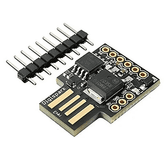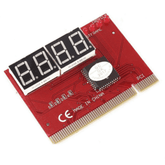Arduino in Real Life: 7 Everyday Things You Didn’t Know You Could Build
Summary
Have you ever looked around your home and wondered if you could build that gadget yourself? With the right tools and a bit of creativity, you can transform everyday inconveniences into smart solutions.
Arduino boards have revolutionized DIY electronics, making it possible for anyone to create functional devices that solve real problems.
From automating your morning routine to securing your home, the possibilities are limited only by your imagination.

Why Arduino is Perfect for Real-Life Projects
Arduino has become the go-to platform for makers, students, and hobbyists worldwide, and for good reason. Unlike complex industrial systems that require specialized knowledge and expensive equipment, Arduino offers an accessible entry point into the world of electronics and programming.
Arduino real life projects are easy and simple to get started with. An Arduino UNO, Nano, or Micro; all these boards share the same fundamental programming language and structure.
This means once you learn the basics on one board, you can easily adapt your skills to different projects and form factors.
Cost is another compelling factor. While professional automation systems can run into thousands of rupees, simple DIY projects with Arduino can be completed for under Rs 5000.
The Arduino community has grown so large that you'll find countless tutorials, libraries, and pre-written code snippets that can jumpstart your project. This collaborative ecosystem makes troubleshooting easier and learning faster.
The practical Arduino uses extend far beyond blinking LEDs and basic sensors. Modern Arduino IoT projects can connect to your smartphone, send you notifications, log data to the cloud, and even respond to voice commands.
This connectivity transforms Arduino from a simple microcontroller into a powerful hub for home automation using Arduino. What makes Arduino particularly suitable for everyday projects is its real-world reliability.
Unlike hobby electronics that sit on a shelf after the initial excitement wears off, properly designed Arduino projects can run continuously for years. They're robust enough for daily use yet simple enough to modify when your needs change.
7 Everyday Things You Can Build Using Arduino
Smart Plant Watering System

If you've ever returned from vacation to find your plants withered and brown, this project will resonate with you. A smart plant watering system monitors soil moisture levels and automatically waters your plants when they need it.
Using a soil moisture sensor connected to an Arduino UNO, you can create a system that keeps your plants perfectly hydrated without any manual intervention.
Key Components and Features:
- Soil moisture sensor to monitor water levels in real-time
- Small water pump activated automatically when soil becomes dry
- Real-time clock module for scheduled watering at optimal times
- LCD display showing current moisture readings
- Optional WiFi module for remote monitoring via smartphone
The system works by continuously reading moisture levels in the soil and triggering the pump when readings drop below your customized threshold.
For those interested in IoT with Arduino, integrating WiFi capabilities allows you to monitor your plants remotely and receive push notifications on your phone when watering occurs or when the water reservoir runs low.
Automated Pet Feeder

Pet owners know the struggle of maintaining consistent feeding schedules, especially when work runs late or travel plans change.
An automated pet feeder built with Arduino can dispense precise portions of food at scheduled times, ensuring your furry friends never miss a meal.
This project typically uses a servo motor or stepper motor to control a dispensing mechanism, combined with a real-time clock module for timing.
Arduino for students makes this an excellent learning project because it combines mechanical design with electronic control.
What You Can Customize:
- Portion sizes tailored to your pet's dietary needs
- Multiple feeding times throughout the day
- Voice recording to call your pet during feeding time
- Camera module integration to check on pets remotely
- Notification system alerting you when food is dispensed or reservoir is empty
The mechanical design can range from simple gravity-fed systems to more sophisticated rotating drum mechanisms, depending on your pet food type and desired portion control accuracy.
Motion-Activated Lighting System

Walking into a dark room with your hands full of groceries is more than inconvenient—it's a safety hazard. A motion-activated lighting system using a PIR sensor (Passive Infrared) can automatically illuminate your space when movement is detected.
This is one of the most popular Arduino project ideas because it's practical, relatively simple to build, and saves energy. The system can be programmed to keep lights on for a specific duration after detecting motion and can even adjust brightness based on ambient light levels.
System Capabilities:
- Automatic light activation when motion is detected
- Adjustable timer to keep lights on for 30 seconds to several minutes
- Ambient light sensor prevents activation during daylight
- Multiple sensor zones for comprehensive room coverage
- Energy-efficient LED control reducing electricity costs
For added sophistication, connect multiple sensors throughout your home for comprehensive coverage.
This falls under home automation using Arduino and demonstrates how technology can enhance everyday comfort while reducing energy waste by ensuring lights are only on when needed.
Smart Doorbell with Camera

Transform your ordinary doorbell into a smart security system that sends images to your phone whenever someone rings.
Using an Arduino Nano for its compact size, combined with a camera module and WiFi connectivity, you can create a doorbell that captures photos or short videos of visitors.
Project Features:
- ESP32-CAM module for high-quality image capture
- Push notifications sent directly to your smartphone
- Image storage on SD card for security records
- Cloud upload capability for remote access
- Two-way audio communication with visitors (advanced)
- Integration with smart locks for remote door control
The system can be programmed to capture multiple images when the doorbell button is pressed or even detect motion for pre-ring monitoring.
This project showcases the applications of Arduino in home security and provides peace of mind whether you're upstairs or across town.
You can enhance it further by adding facial recognition capabilities to identify family members versus strangers, or integrate it with smart home systems like Home Assistant.
Weather Station

Why rely on generic weather forecasts when you can monitor conditions right in your backyard? A personal weather station built with Arduino measures temperature, humidity, barometric pressure, and even rainfall.
Using sensors like the DHT22 for temperature and humidity, and a BMP280 for pressure, you can create a comprehensive weather monitoring system.
Sensors and Measurements:
- DHT22 sensor for temperature and humidity readings
- BMP280 barometric pressure sensor for weather prediction
- Rain gauge sensor using tipping bucket mechanism
- Anemometer for wind speed measurement
- Wind vane for wind direction detection
- UV sensor to monitor sun exposure levels
The collected data can be displayed on an LCD screen, logged to an SD card for trend analysis, or uploaded to weather services like Weather Underground.
This represents one of the most educational Arduino projects for beginners because it introduces multiple sensors, data logging, and potentially wireless communication.
Arduino IoT projects like this can even predict local weather patterns based on pressure trends—a rising barometer typically indicates improving weather, while falling pressure suggests storms approaching.
Garage Door Security Monitor

Ever driven away from home wondering if you closed the garage door? This simple yet effective project uses a magnetic reed switch or ultrasonic sensor to monitor your garage door's position and sends alerts to your phone if it's been left open for too long.
Using an Arduino Micro for its small footprint, you can discreetly mount the electronics near your garage door opener. This how to use Arduino in daily tasks example demonstrates that sophisticated home security doesn't require expensive commercial systems.
Monitoring and Alert System:
- Reed switch or ultrasonic sensor detects door position (open/closed)
- WiFi module sends real-time status updates to smartphone app
- Customizable timeout alerts if door remains open too long
- Activity logging records all opening and closing events with timestamps
- Optional integration with existing opener for remote closing capability
- LED indicator visible from inside house showing current door status
The system can also log opening and closing times, providing a security record of garage access patterns. For enhanced security, add a temperature sensor to monitor freezer or refrigerator conditions in the garage, ensuring you're alerted to power failures that might spoil food.
Smart Coffee Maker Timer

For coffee lovers, waking up to the aroma of freshly brewed coffee is a small luxury that makes mornings better. By adding Arduino control to your standard coffee maker, you can schedule brewing times, control brew strength, and even start brewing remotely from bed.
This project involves a relay module to control the coffee maker's power, a real-time clock for scheduling, and optionally Wi-Fi for remote control. It's an excellent introduction to cool things to make with Arduino that genuinely improve daily life.
Smart Brewing Features:
- Programmable wake-up times for automatic morning coffee
- Separate weekend and weekday schedules
- Remote brewing control via smartphone app
- Voice assistant integration (Alexa, Google Home)
- Brew strength adjustment through timing control
- Safety shutoff preventing hours-long warming plate operation
You can program different schedules for weekdays and weekends, ensuring your coffee is ready exactly when you need it. This showcases Arduino Uno projects at their most practical taking something you already use and making it smarter.
The relay-based control is simple yet powerful, and the same technique can be applied to other appliances like space heaters, fans, or lamps for comprehensive home automation.
Conclusion
The seven projects outlined above represent just a fraction of what's possible when you combine creativity with Arduino technology.
What makes these builds special isn't just their functionality—it's that they solve real problems you encounter every day.
From keeping plants alive to securing your home, IoT projects with Arduino bridge the gap between digital innovation and practical necessity.
Once you've built one project, you'll start seeing opportunities everywhere to automate, improve, and innovate the world around you.







